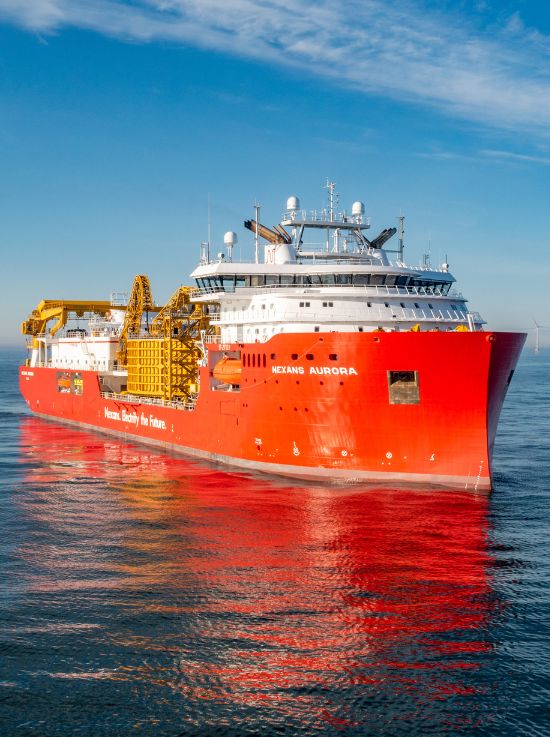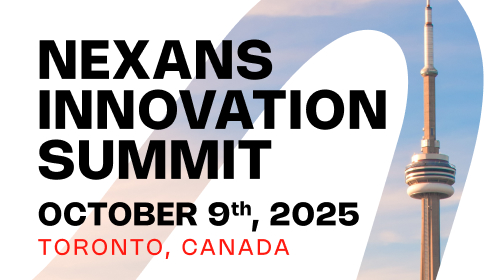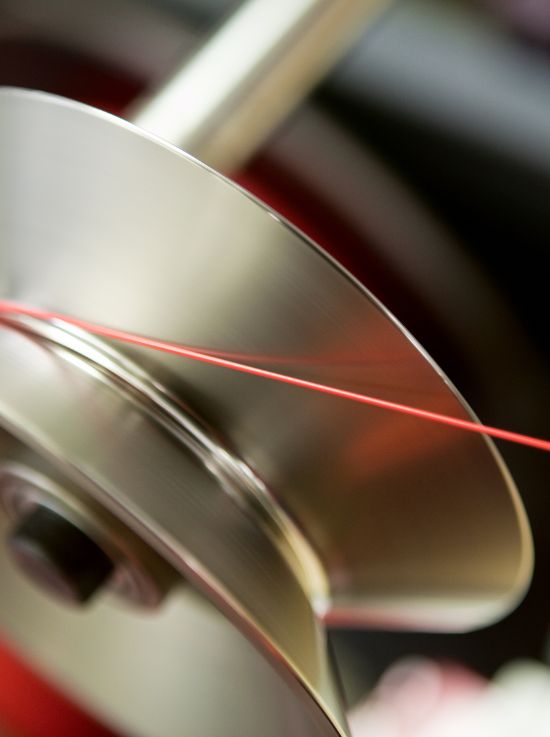- Nexans is stepping up its recycling strategy to support the energy transition and address the growing copper shortage.
- This necessary transformation is creating an opportunity for Nexans to set itself apart in the sector by leveraging its unique capabilities and agility.
- The company is launching its turnkey CableLoop service: collecting installation cable off-cuts and transporting them to the recycling centre, and then transforming the waste into recycled raw materials.
- A pioneer in electrification, the Group aims to use a minimum of 30% recycled copper in the manufacturing of its cables by 2030.
At a time when demand for electricity is set to increase by 35% by 2050, and the world is heading for a risk of shortages of raw materials – including copper, Nexans is strengthening its key role as a player in the circular economy to speed up the energy and climate transition.
By actively investing in the recycling of non-ferrous metals, Nexans is promoting the creation of a sustainable cycle geared towards decarbonized energy: extended life cycles, reuse and recycling will contribute to a circular economy, reducing the use of virgin resources and lowering the carbon footprint created by the electrification of our activities.
Nexans already recycles over 40,000 metric tons of its own production waste every year. In Europe, this cable sorting and recovery process is partly carried out through the RecyCâbles joint venture created with Suez in Noyelles-Godault (northwestern France). As well as guaranteeing product traceability, local processing avoids the need to export large quantities of waste from France.
End-to-end recovery of cable for clients and partners
With 60 years’ experience in recycling cable waste, Nexans is stepping up its circular economy strategy and is launching CableLoop, a unique recycling and recovery service for cable offcuts.
Nexans buys used cables – end of construction site electrical wires or obsolete industrial cables, and transforms them into valuable, infinitely reusable resources for its partners, customers, suppliers and the cable industry.
Two versions of the service are available:
- CABLELOOP Enterprises: the service for companies via on-site collection
- CABLELOOP Professionals: a new service offered by specialized distributors, for professional customers and electricians who can return their used cables to their branch.
With these new recycling loops, Nexans aims to collect more than 800 metric tons of used cables by 2025 and to expand this circular model by developing waste collection and recovery from the industrial ecosystem and from its electrical equipment installation and distribution partners in France and Europe (Germany, Belgium, Spain and Italy. Other European countries on request). Nexans will offer tailor-made logistics solutions and simplified, autonomous waste management on a 24-hour web platform together with traceability of the entire chain of operations.
Today’s waste is tomorrow’s growth
Nexans has been aware of the looming copper shortage for many years now, and has been warning of the consequences. Our strategy incorporates circularity, an essential response to resource scarcity. Electrifying the future expresses Nexans’ conviction not only in terms of innovation but also, and above all, in creating a responsible and sustainable ecosystem for our partners, customers and employees.
Managing Director, Nexans France
Since 2020 we have been working in partnership with Nexans to take back our cable offcuts from construction sites and branches, reflecting our commitment to promoting the circular economy in response to growing customer demand. The recycling service provided by Nexans allows us to add value to our waste by giving it a second life.
Procurements Officer, Equans France
We have set up a partnership with Nexans to take back cable offcuts from our warehouse, reflecting our strategy to promote the circular economy, and to meet the expectations of our installer customers.
CEO, Rexel France
The scrap cable recovery service offered with Nexans enables us to enrich the range of services provided by our branch network, to recycle our waste and help strengthen our employees’ commitment. This approach is virtuous on all levels: environmental, economic and social.
Sales Director, Sonepar France
Partnerships to promote the circular economy
Nexans is also a founding member of Valobat, an eco-organization made up of nearly 50 leading Building Products and Materials (BPM) manufacturing companies, committed to the management of construction sector waste and now in the circular economy. Nexans also works with suppliers committed to producing, among other things, low-carbon PE/PVC and aluminum made from recycled raw materials or using decarbonized energy.
All our press releases
Read all press releases- Nexans launches a new high-voltage cable range for aircraft that aligns with aerospace industry requirements to be carbon neutral by 2050.
- The new cable range has a higher power density, with partial discharge free operation over a wide range of voltages and altitudes.
- As part of the “Clean Aviation” partnership, Nexans will play a significant role in reaching the program’s energy efficiency and emissions goals, leading to a potential reduction of up 90% in emissions varying by the type of aircraft.
Nexans, a leader in the design and manufacturing of cable systems and services, has launched a new high-voltage cable range for aircraft. With an efficiency higher than the previous generation, this cable family is a decisive step to reaching the carbon neutral objective in the aerospace industry by 2050.
The need to consume less fuel is rapidly growing, driving the aerospace industry to change mobility technologies to alternative hybrid-electric aircraft. To support the next generation of aircraft, Nexans new high-voltage cables allow for a higher level of power without increasing the conductor’s diameter and weight.
Previewed at the Paris Air Show, Nexans new high-voltage cables for electrical and hybrid aircraft, and E-VTOL (Electrical Vertical Take-Off and Landing Vehicules) fit the requests from the Aerospace industry to reduce its carbon footprint, and the agenda of the French governement and the European commission to develop an innovative solution to integrate electrical and hybrid engines in aircraft.
Nexans high-voltage cables are 20 times more efficient than standard aircraft cables. They can be used from 600V to 6,000V (AC, DC, PWM) when the standard aircraft voltages are ranging from 28V DC to 115V or 230 AC. They have higher power density (power/mass), using a patented design with semi-conductive and high resistivity layers which are extruded as sandwich layers. This guarantees a partial discharge free operation over a wide range of voltages and altitudes. A partial discharge is an electrical discharge that partially bridges a gap between a high-voltage conductor and a low-voltage conductor. Partial discharge causes degradation and can lead to system breakdown.
This new step represents a major advancement for power transmission systems and the development of innovative and sustainable cable solutions in the aerospace sector. Nexans is applying its expertise to the development of multiple new-generation electrical technologies that are an integral part of sustainable flight. We are developing high-voltage cables to pave the way for the reduction of carbon emissions across the sector.
Aerospace Technical Director, Nexans
As part of the “Clean Aviation” partnership, Nexans will play a significant role in reaching the program’s energy efficiency and emissions goals, leading to a potential reduction of up 90% in emissions varying by the type of aircraft.
Nexans’ high voltage cables will be produced at its Draveil site in France, which employs 260 people.
Press releases
Read all our press releases- The first range of low-carbon power grid cables available on the French market guarantees a minimum 35% reduction in greenhouse gas emissions compared to standard cables.
- This offer is built on the guaranteed use of low-carbon aluminium and recycled plastic, as well as the use of renewable or decarbonised energies in manufacturing the cables. Products are 100% manufactured in France.
- Access to the CO2 data of these cables is guaranteed so that all the players in the chain can monitor and optimise their carbon emissions.
Nexans is launching a new range of low-carbon distribution grid cables, the first on the French market. By adopting a holistic approach all along the value chain and throughout the cable life cycle, the Group has succeeded in reducing the greenhouse gas emissions of its low- and medium-voltage cables from 35% to 50%, depending on the products.
This unprecedented offer represents a new stage, fully illustrating the Group’s commitment to decarbonised electrification. We are proud to introduce it in France: this illustrates the commitment of our teams to sustainable development, from our global Ampacity R&D center in Lyon to our factories, via the marketing and purchasing teams.
Executive Vice-President of the Power Distribution Cables & Accessories business, Nexans
The Group’s ambition: to reduce the cable industry’s carbon footprint…
The manufacturing of one kilometer of energy network cable currently generates a volume of CO2 representing two to three times the average annual emissions per inhabitant in France. These emissions come mainly from the aluminium conductor, which alone accounts for between 70% and 90% of the total footprint, followed by plastics, transport and the manufacturing process.
In order to reduce the carbon footprint of its products by more than one-third, Nexans acts-on:
- The guaranteed use of 100% low-carbon aluminium (produced during the electrolysis phase, using decarbonised electricity), in line with the objectives of the Aluminium Forward 2030 coalition of which the Group is part, and which is aimed at speeding up the sector’s decarbonisation;
- The use of up to 50% recycled plastic in the insulation and/or sheathing;
- Targeted actions on the manufacturing process and transport;
- Increased selectivity in the choice of suppliers based on their environmental performance;
- 100% French production at its plants in Jeumont and Bourg-en-Bresse.
A further advantage lies in the fact that Nexans provides all the environmental data for its products (PEP Ecopassport®) to enable power distribution operators, installers and distributors to manage their carbon emissions. On request, the Group also performs a carbon assessment per project or per customer.
… and over the entire life cycle of a cable
The environmental footprint of a cable is also measured beyond its manufacturing. Approximately 90% of the total emissions from grid cables are generated after they are put into service, due to the energy loss, known as the “Joule effect”, which accumulates over decades of use.
In line with its E3 ambition (Economy, Environment, Engagement), Nexans offers a range of solutions to reduce the carbon footprint of the cable over its entire life cycle:
- Engineering studies to determine the optimal cable type and cross-sections over the entire life cycle depending on the application;
- Innovative cable solutions, such as the EDRMAX® medium voltage cable, which can be buried as is, with no need for a sand bed, thanks to its reinforced sheath – thus reducing the CO2 emissions stemming from its installation by 10%;
- Digital solutions to increase our customers’ productivity: the ULTRACKER® range;
- Innovative technology via RecyCâbles (joint venture between Nexans and SUEZ) for the recycling copper and aluminum cables, promoting the circular economy.
Nexans’ new low-carbon power network cable offering illustrates Nexans’ capacity for innovation and its strong commitment to sustainable development, as the Group is recognized as a global leader in climate action by several extra-financial assessment bodies. This first offer is part of an ambitious Nexans carbon trajectory, validated by the Science-Based Targets Initiative (SBTi), aimed at reducing emissions by 4.2% per year between 2019 and 2030.
Press releases
Read all our press releases- Aluminum producer Trimet and Nexans have laid the groundwork for improving the eco-balance of power cables.
- In a joint breakthrough development project, the two companies have developed a material with recycled aluminum content for the production of aluminum rod used in electrical cables.
Trimet and Nexans have developed a new product able to meet the high technical requirements on the mechanical properties and conductivity of the alloy while reducing the product’s carbon footprint. Until now, power cables have been manufactured exclusively on the basis of primary aluminum.
Melting and recycling of aluminum scrap requires only a fraction of the energy needed to produce primary aluminum. However, recycled aluminum contains impurities that adversely affect the material’s specific properties. The collaborative project between Nexans and Trimet aimed to coordinate optimized raw material supply and innovative material development. For example, Nexans has refined the sorting of aluminum scrap at its production sites in Europe through RecyCâbles, a Nexans-Suez joint venture, while gearing its collection to recycling for electrical cables. Trimet has closed the material cycle with its recycling concept and used the scrap obtained to develop a high-quality alloy that meets the full range of quality requirements for mechanical and electrical performance.
Our project shows that recycling offers enormous potential to reduce CO2 emissions. I am proud that Nexans can now offer its customers a product that combines superior quality while ensuring a higher level of circular economy. Nexans thus pursues its strategy to constantly look for new sources of value for its customers.
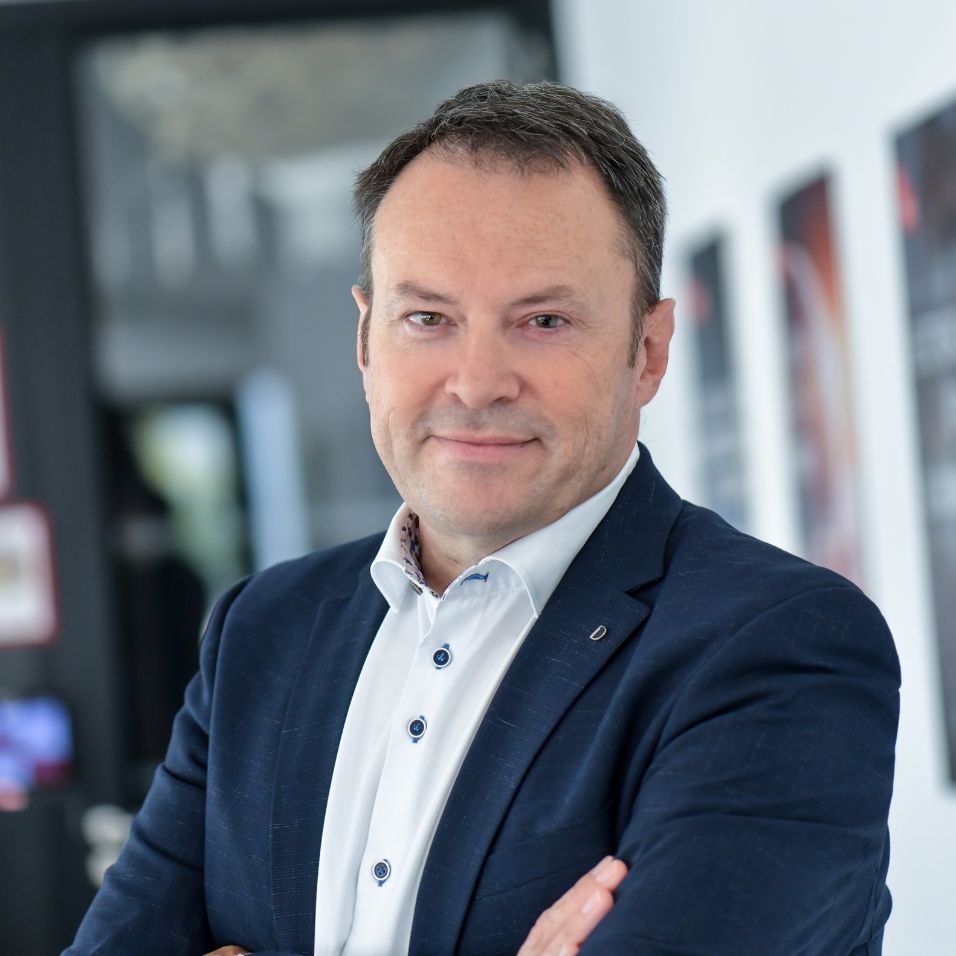
Chief Operating Officer, Nexans
Recycling is an important component of sustainable aluminum production for us. The development of high-quality alloys with the smallest possible carbon footprint makes a significant contribution to this.
CEO of Trimet Aluminum SE and President, Trimet France SAS
Nexans plans to maximize the use of aluminum rod with recycled aluminum content in 2023. This enables the global company to meet its customers’ growing demand for products with a favorable eco-balance. For its part, Trimet is expanding its range of recycled products in the aluminum wire sector. In so doing, the materials specialist is building on its commitment to decarbonize production while making a further contribution to the energy transition.
Find all our press releases
Read all- A symbol of Nexans’ ambition to become a pure player in electrification, AmpaCity brings approximately 100 engineers, researchers and technicians together to work on the electrical technology of the future.
- Nexans invested €20 million in this new 6,000 m2 R&D site.
- With new digital services, data tools, and the integration of recycled materials, this hub brings together diverse minds to develop innovations for safer, more sustainable and decarbonized electricity.
Nexans has been operating in Lyon, France for 120 years and today inaugurates AmpaCity, its new global innovation hub dedicated to low-carbon electrification.
This is where the Group is developing a portfolio of nearly 1,800 patents, with 80 filed every year. Nexans is one of the most innovative European companies in its sector, recognized as such by its customers and partners, present today in Lyon.
AmpaCity demonstrates the Group’s ambition to become a pure player in electrification and to meet the challenges of an electrified world that will require:
- An increase in the distribution of electricity where demand could rise by up to 40% by 2040;
- Improving reliability, resilience, and security of electric grids to better sustain the increase of demand, many of which date from the 1950s-1960s;
- Accelerating installation projects and guaranteeing competitiveness and accessibility of electricity by developing networks and interconnections between countries;
- Reducing the impact on the environment and the promotion of decarbonization in order to combat global warming and act as a responsible partner, in particular through the continuous use of innovative materials.
The 6,000 m² site, which includes 4,500 m² of laboratories, received 20 million euros in investment and brings together around a hundred experts in electrical insulation performance, developing materials with a reduced environmental impact, cable systems that limit fire risks, and digital solutions for monitoring electrical networks. The teams are international, with eight different nationalities represented.
At AmpaCity, Nexans is inventing new, efficient, sustainable, and recyclable materials. The Group has made a firm commitment to recycling 100% of its production waste by 2030, while increasing the quality, properties, and longevity of the materials used.
In terms of fire safety, Nexans is developing electrical cables for the buildings of the future that are more fire-resistant than today, more efficient and with better functionality, with exposure to more than 1000 degrees Celsius, and is continuing to supply safety devices such as alarms, fire doors and emergency lighting for fires.
Another major innovation presented today is Nexans’ superconductor cable. It’s powerful and discreet, measuring less than 20 centimeters in diameter and can carry up to 3 GW of electricity, i.e. the equivalent power of 3 nuclear reactors.
Nexans is the first cable and solutions provider to have combined its expertise with that of asset management professionals. Thanks to the digital and smart tools implemented by the Group, operators can anticipate risks and monitor the state of networks from anywhere, avoiding blackouts and other major failures, particularly in cities and at stations and ports.
I am particularly proud to inaugurate AmpaCity, in the historical birthplace of Nexans in France. It is here that our teams, in collaboration with our partners, imagine and develop solutions to meet all the challenges of future electrification. Our reliable, sustainable and innovative solutions allow us to tackle the challenges of supporting the increasing demand for electricity and being a key player in the energy revolution, on a global scale.

CEO, Nexans
This research and innovation center showcases the Group’s innovative spirit. Our teams are always looking for ways to optimize grid performance in terms of power, efficiency, safety and sustainability. They do so through a collaborative and inclusive process with our partners, involving a community of more than 800 people internationally.
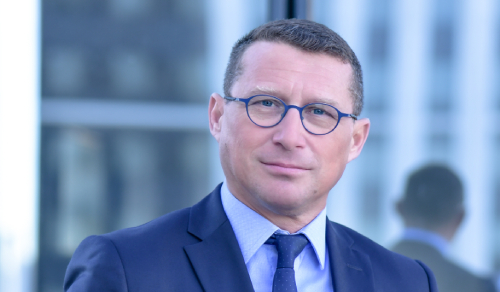
Corporate Vice President for Innovation, Services and Growth, Nexans
This event dove into future of electricity, with numerous demonstrations organized in the presence of public figures and partners, including Microsoft and Cosmo Tech. Fabrice Amedeo, French skipper of the Vendée Globe Challenge 2021 who participated in the last double handed Transat Jacques Vabre and recently returned from the Vendée Arctique, also highlighted his scientific and oceanographic project development with the help of Nexans.
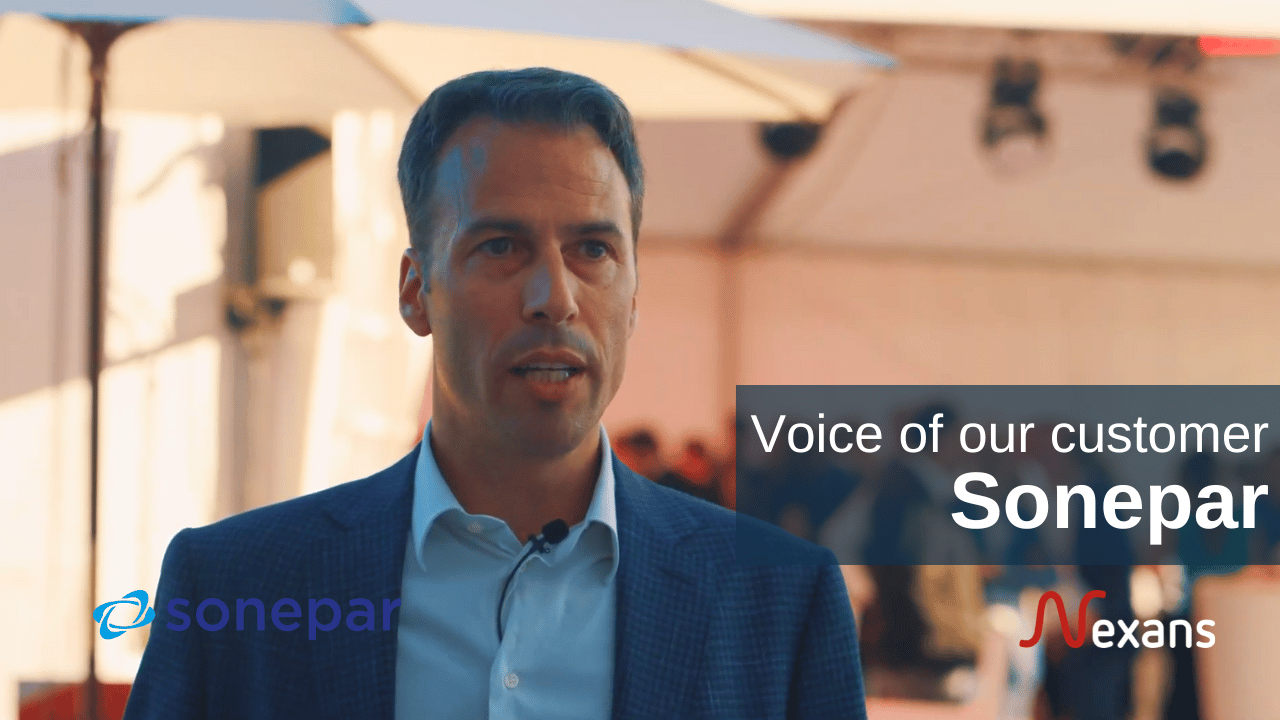
Matteo Caldognetto, Sonepar, about AmpaCity

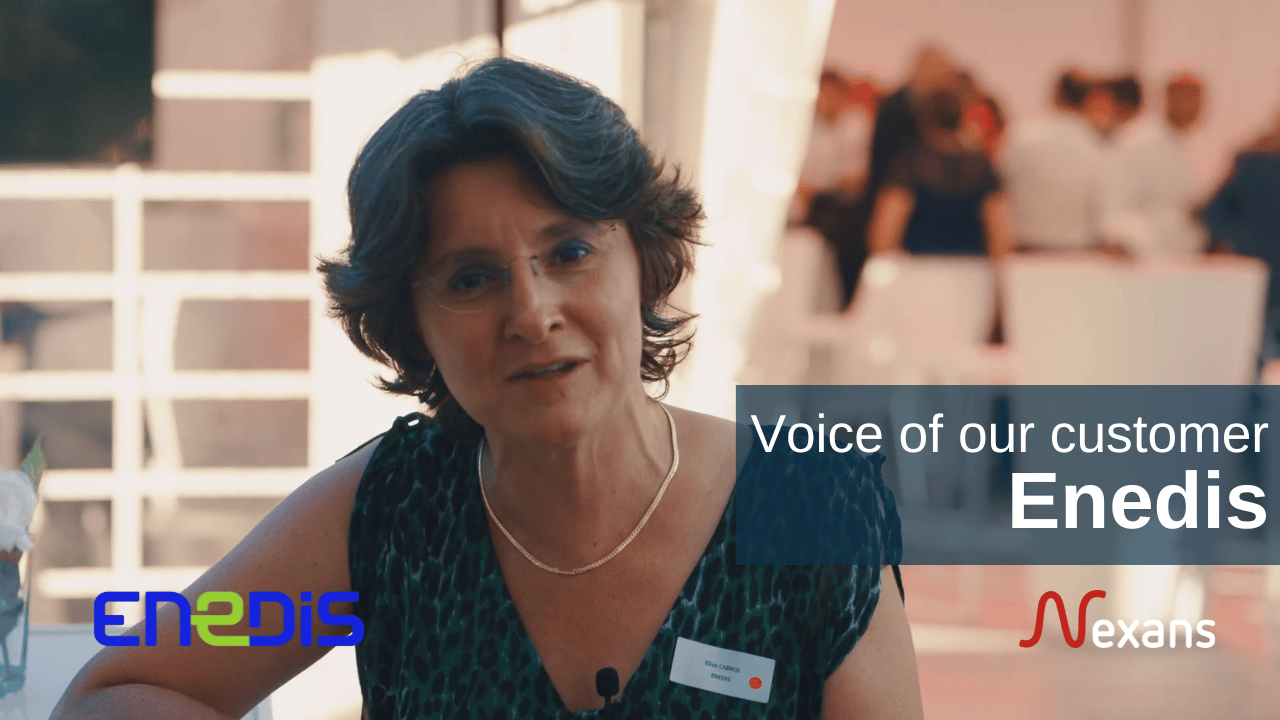
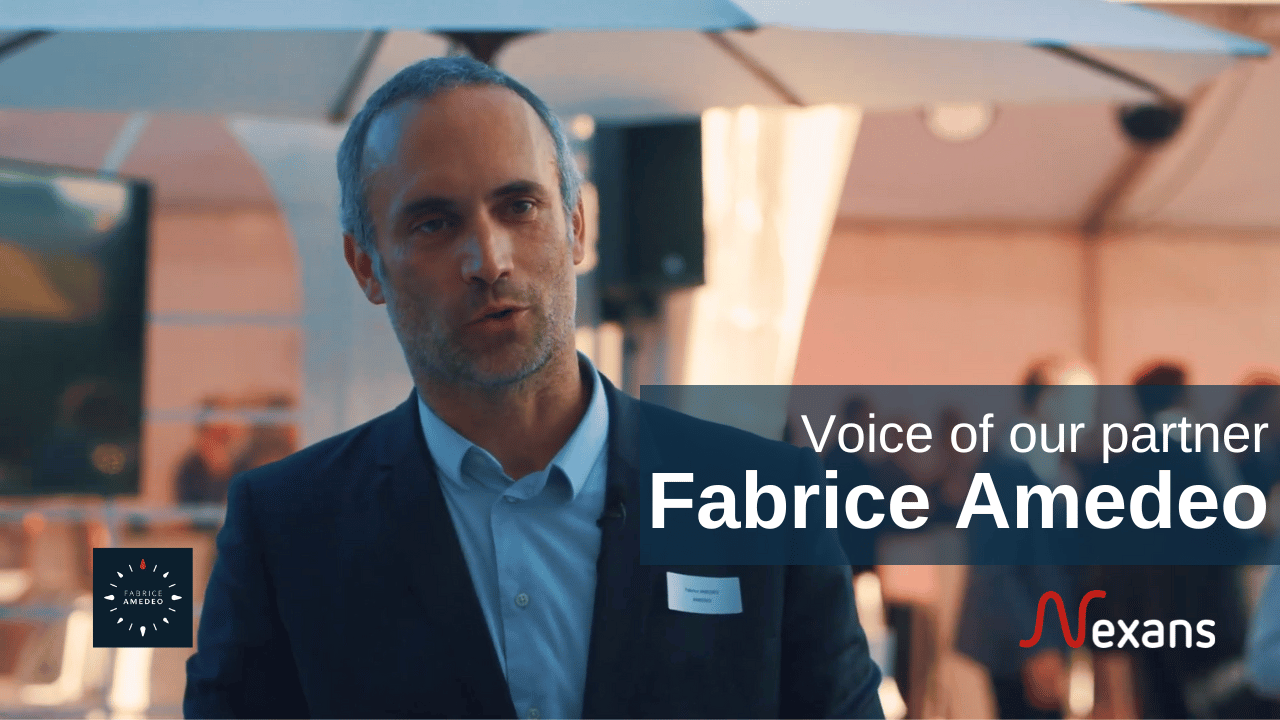
All our press releases
Read all
